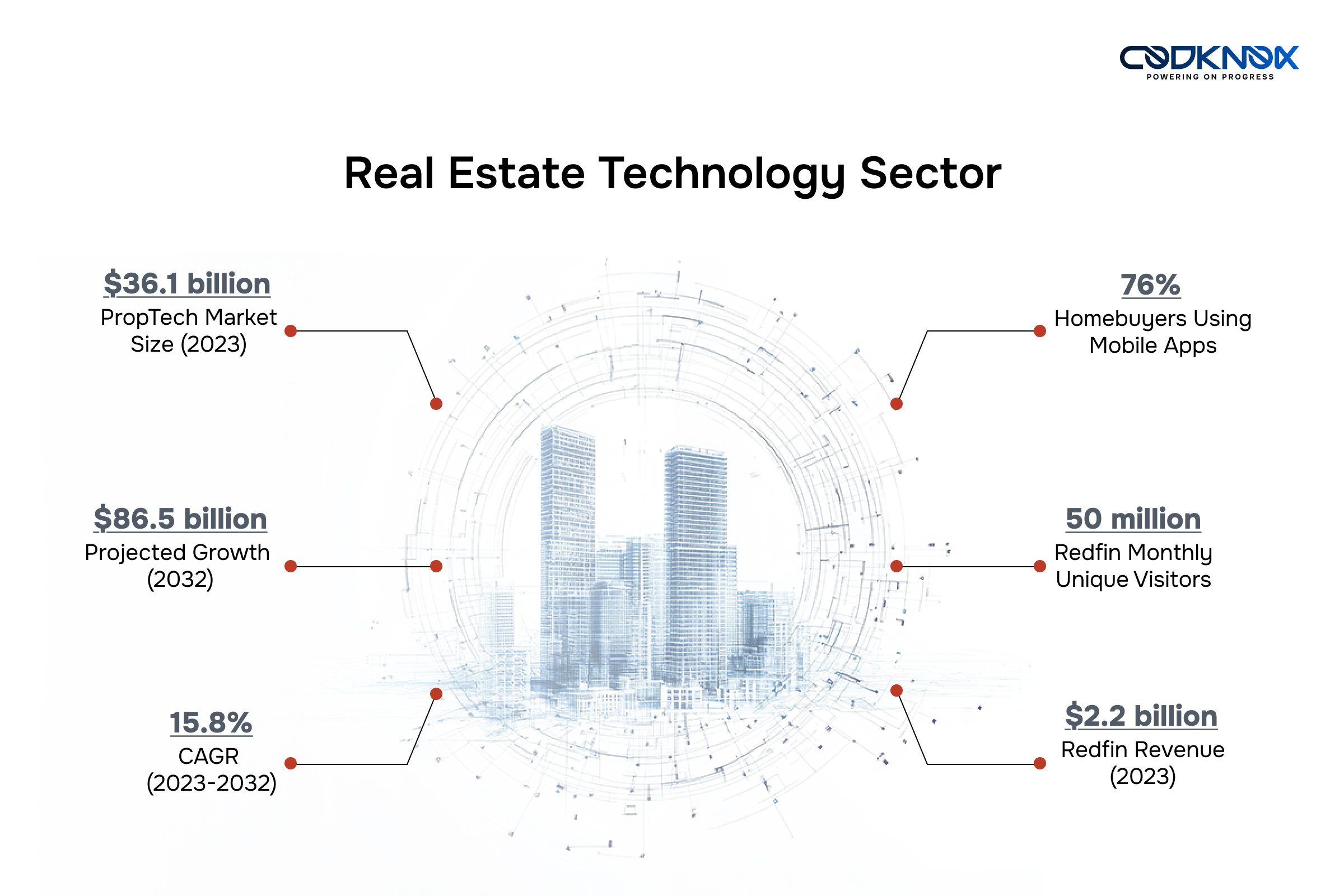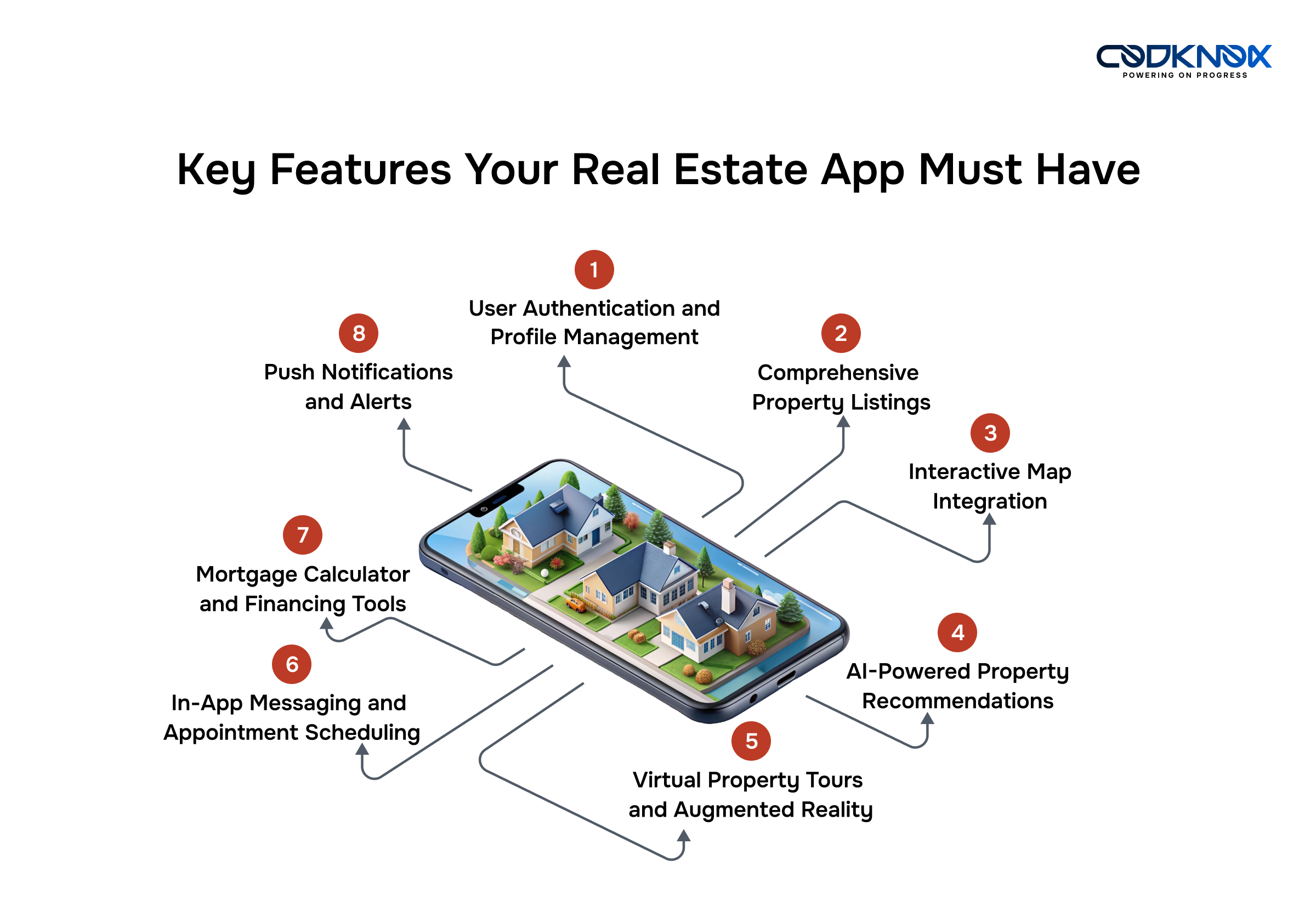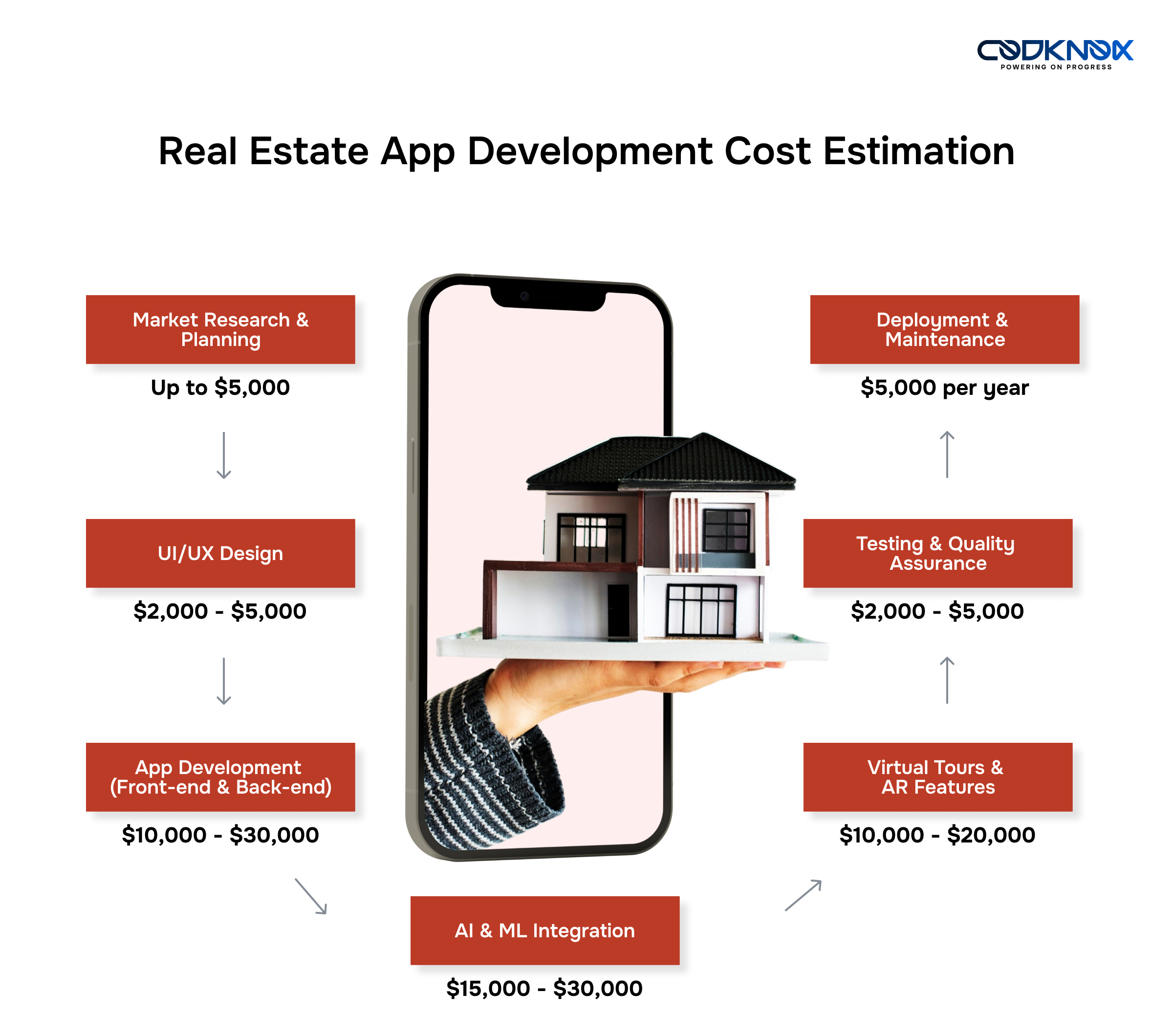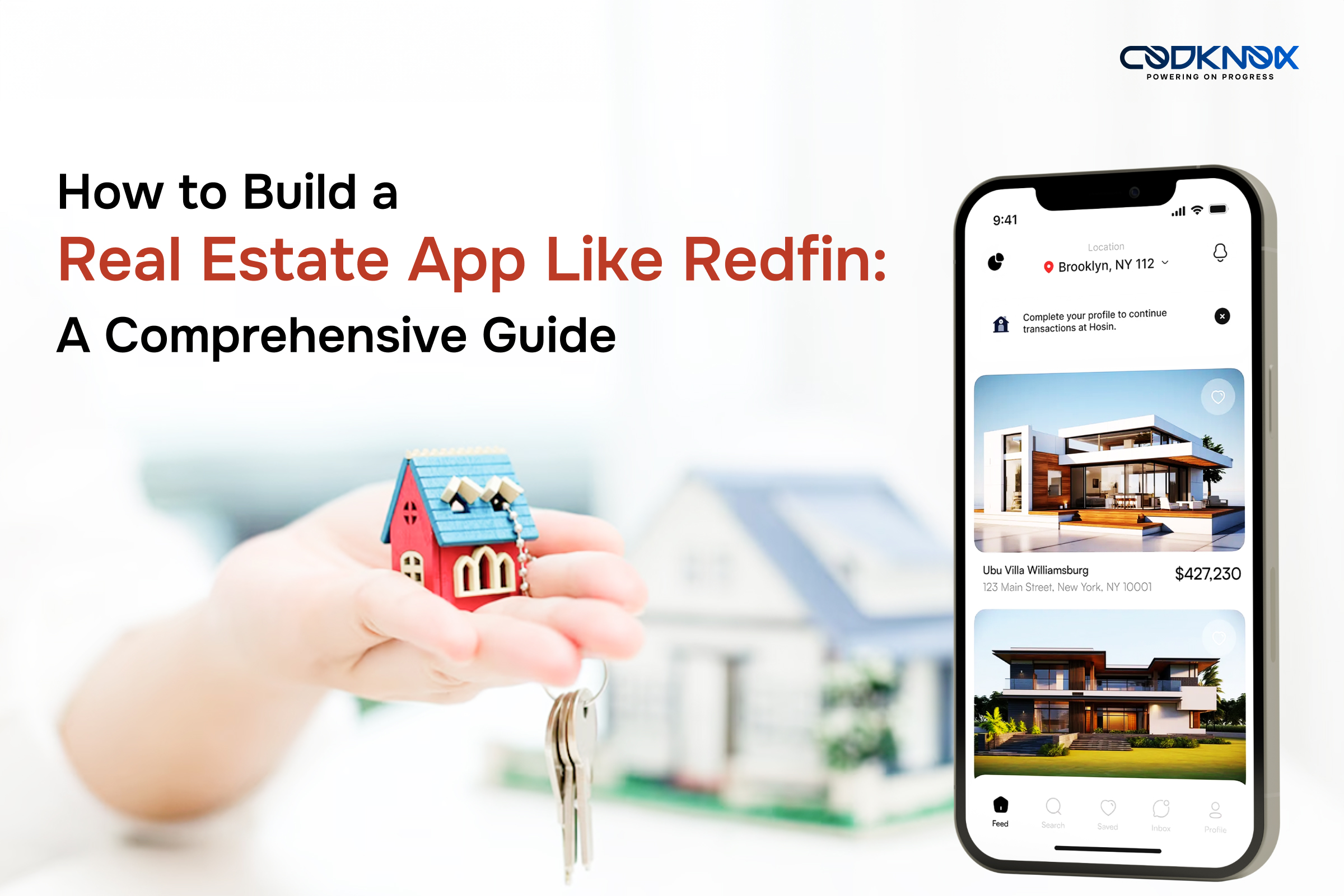The real estate industry has witnessed a technological revolution with the rise of digital platforms like Redfin, Zillow, and Realtor.com. These apps have simplified property searches, transactions, and communication between buyers, sellers, and agents.
If you are considering developing a real estate app like Redfin, this comprehensive guide will explore essential features, the development process, estimated real estate app development cost, and key factors to consider when choosing a real estate app development company in Los Angeles, USA.
Real Estate Technology Sector
The real estate technology sector, known as PropTech, has experienced substantial growth in recent years. Here are some updated statistics highlighting the increasing adoption of real estate mobile applications:

Global PropTech Market Size: The PropTech market was valued at approximately $33.57 billion in 2023 and is projected to grow from $36.55 billion in 2024 to $89.93 billion by 2032, exhibiting a CAGR of 11.9% during the forecast period. (Source)
Redfin’s Market Impact: In the third quarter of 2024, Redfin reported revenue of $278.0 million, marking a 3% increase compared to the same period in 2023. (Source)
Essential Features of a Real Estate App Like Redfin

1. User Authentication and Profile Management
A real estate app must offer secure user authentication through email, phone number, or third-party platforms like Google and Facebook. Users should be able to create profiles based on their role—buyer, seller, or real estate agent—and personalize their preferences.
2. Comprehensive Property Listings
The core functionality of any real estate app is its property listings. The app must include:
- High-resolution property images.
- Detailed descriptions including square footage, amenities, and pricing.
- Advanced search filters for property type, location, price range, and more.
3. Interactive Map Integration
Geolocation services enhance the user experience by allowing buyers to view properties on a map. Integration with Google Maps or Apple Maps provides real-time location insights, including nearby amenities like schools, hospitals, and public transportation.
4. AI-Powered Property Recommendations
Machine learning algorithms analyze user behavior and preferences to provide personalized property recommendations. AI-based predictive analytics also help in forecasting market trends and property value fluctuations.
5. Virtual Property Tours and Augmented Reality
Virtual and augmented reality features enable buyers to explore properties remotely. According to a 2023 study by Realtor.com, 61% of homebuyers prefer virtual tours before visiting a property in person.
6. In-App Messaging and Appointment Scheduling
Facilitating direct communication between buyers, sellers, and agents improves efficiency. Scheduling tools allow users to book appointments for property viewings within the app, reducing dependency on phone calls and emails.
7. Mortgage Calculator and Financing Tools
An integrated mortgage calculator helps users estimate monthly payments based on loan terms, interest rates, and down payments. Some apps also connect users with lenders for pre-approval.
8. Push Notifications and Alerts
Personalized push notifications keep users updated about new listings, price drops, and scheduled property visits. AI-driven alerts provide real-time market insights to keep buyers informed.
Steps to Develop a Real Estate App Like Redfin
Step 1: Market Research and Competitor Analysis
Conduct thorough market research to identify current trends and gaps in existing real estate apps. Analyze competitors like Redfin, Zillow, and Realtor.com to develop a unique value proposition.
Step 2: Define the App’s Scope and Features
Decide whether to build a web-based, mobile, or hybrid app. Determine the key features required for the initial launch and plan for future updates based on user feedback.
Step 3: Choose the Right Technology Stack
- Front-end Development: React Native, Flutter, Swift (iOS), Kotlin (Android)
- Back-end Development: Node.js, Python, Ruby on Rails
- Database: PostgreSQL, MongoDB, Firebase
- API Integration: Google Maps, Payment Gateways, AI-based search algorithms
Step 4: Design an Intuitive UI/UX
A well-designed user interface enhances engagement and usability. Ensure seamless navigation, attractive layouts, and a mobile-first approach for optimal performance.
Step 5: Develop and Test the App
Development involves coding the front-end and back-end functionalities. Rigorous testing, including functional, performance, security, and usability testing, ensures the app operates smoothly.
Step 6: Launch and Marketing Strategy
Deploy the app on iOS and Android platforms. Promote it through SEO, social media marketing, paid ads, and strategic partnerships to attract users.
Step 7: Continuous Updates and Maintenance
Regular updates with new features, bug fixes, and security patches keep the app competitive and enhance the user experience.
Read Also: Build a Real Estate App Like Zillow in 2025
Real Estate App Development Cost Estimation

Choosing the Best Real Estate App Development Company in Los Angeles, USA
Selecting experienced real estate app development services is crucial for building a high-quality product. Consider these factors:
1. Proven Track Record
When selecting a real estate app development company, it is essential to evaluate its portfolio and past projects. A company with a strong history in real estate tech will have experience developing apps with features like AI-driven property recommendations, interactive maps, and virtual property tours. Checking case studies, client testimonials, and online reviews will help gauge their expertise and reliability.
2. Technical Expertise
Real estate apps require advanced technologies such as AI (Artificial Intelligence) for property recommendations, AR (Augmented Reality) for virtual tours, and data-driven solutions for market insights. The development company should have experience in these areas and be proficient in frameworks like React Native, Flutter, Node.js, and cloud-based databases to build a scalable and high-performance app.
3. Post-Launch Support
App development does not end at launch. Regular updates, security patches, bug fixes, and feature enhancements are necessary to keep the app competitive. Reliable real estate app development services should provide ongoing support and maintenance, ensuring that the app remains functional and up to date with the latest industry trends.
Final Thoughts
Building a real estate app like Redfin requires strategic planning, cutting-edge technology, and an expert development team. The increasing adoption of mobile real estate platforms highlights the immense potential in this sector.
If you’re looking for expert real estate app development services, Codknox is here to help. As a trusted real estate app development company in Los Angeles, USA, Codknox specializes in creating innovative, high-performance applications tailored to the evolving needs of the real estate industry.
Share your details with us in the form and we will contact you at the earliest.
Let’s bring your real estate app idea to life!

